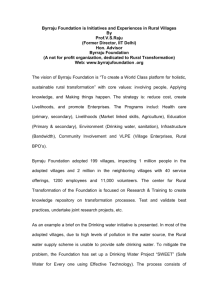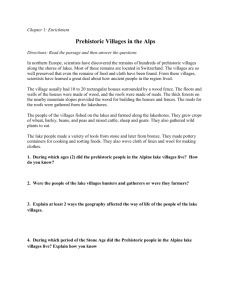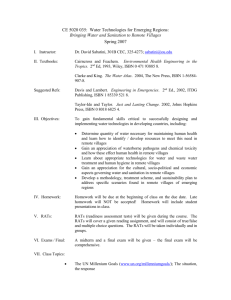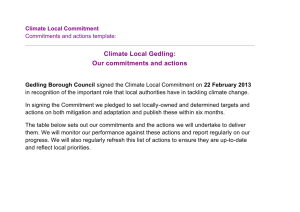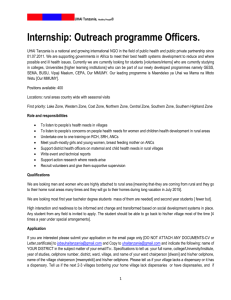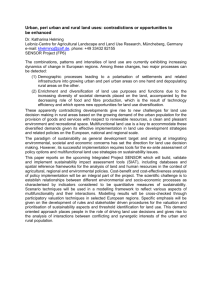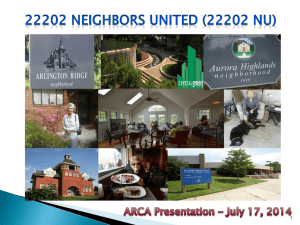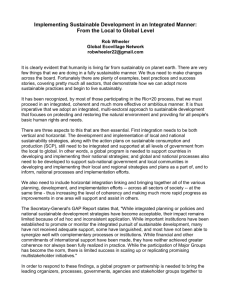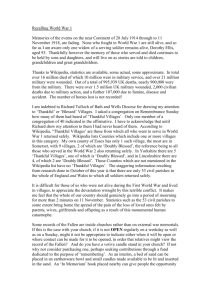Appendix A Exec Summary - Stockton-on
advertisement
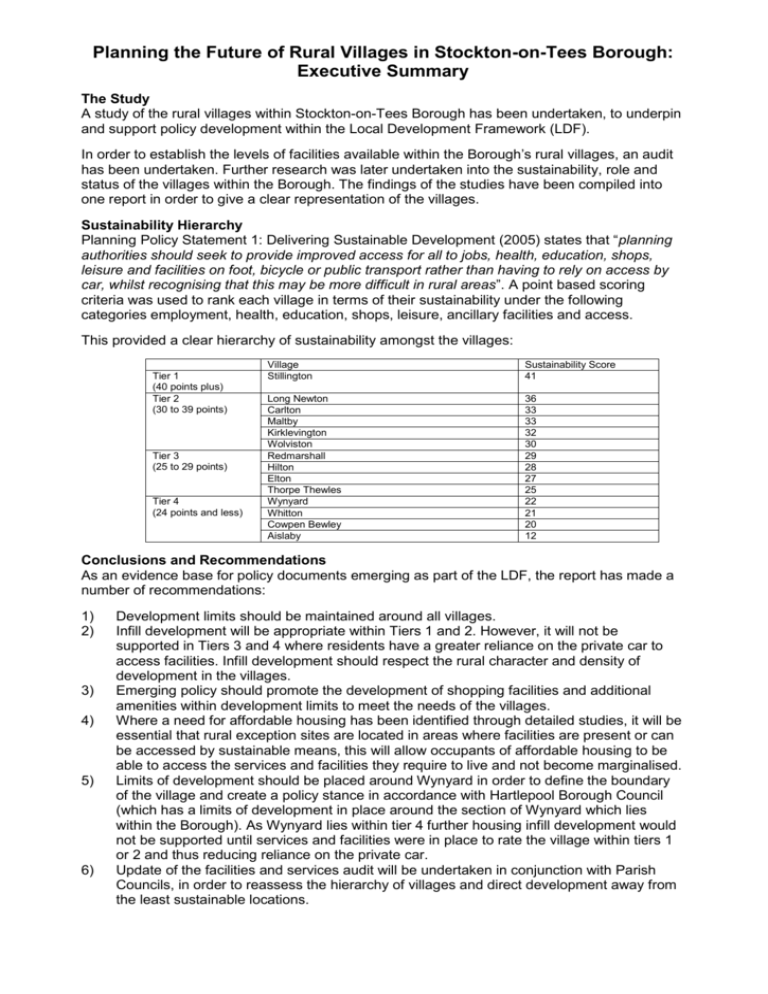
Planning the Future of Rural Villages in Stockton-on-Tees Borough: Executive Summary The Study A study of the rural villages within Stockton-on-Tees Borough has been undertaken, to underpin and support policy development within the Local Development Framework (LDF). In order to establish the levels of facilities available within the Borough’s rural villages, an audit has been undertaken. Further research was later undertaken into the sustainability, role and status of the villages within the Borough. The findings of the studies have been compiled into one report in order to give a clear representation of the villages. Sustainability Hierarchy Planning Policy Statement 1: Delivering Sustainable Development (2005) states that “planning authorities should seek to provide improved access for all to jobs, health, education, shops, leisure and facilities on foot, bicycle or public transport rather than having to rely on access by car, whilst recognising that this may be more difficult in rural areas”. A point based scoring criteria was used to rank each village in terms of their sustainability under the following categories employment, health, education, shops, leisure, ancillary facilities and access. This provided a clear hierarchy of sustainability amongst the villages: Tier 1 (40 points plus) Tier 2 (30 to 39 points) Tier 3 (25 to 29 points) Tier 4 (24 points and less) Village Stillington Sustainability Score 41 Long Newton Carlton Maltby Kirklevington Wolviston Redmarshall Hilton Elton Thorpe Thewles Wynyard Whitton Cowpen Bewley Aislaby 36 33 33 32 30 29 28 27 25 22 21 20 12 Conclusions and Recommendations As an evidence base for policy documents emerging as part of the LDF, the report has made a number of recommendations: 1) 2) 3) 4) 5) 6) Development limits should be maintained around all villages. Infill development will be appropriate within Tiers 1 and 2. However, it will not be supported in Tiers 3 and 4 where residents have a greater reliance on the private car to access facilities. Infill development should respect the rural character and density of development in the villages. Emerging policy should promote the development of shopping facilities and additional amenities within development limits to meet the needs of the villages. Where a need for affordable housing has been identified through detailed studies, it will be essential that rural exception sites are located in areas where facilities are present or can be accessed by sustainable means, this will allow occupants of affordable housing to be able to access the services and facilities they require to live and not become marginalised. Limits of development should be placed around Wynyard in order to define the boundary of the village and create a policy stance in accordance with Hartlepool Borough Council (which has a limits of development in place around the section of Wynyard which lies within the Borough). As Wynyard lies within tier 4 further housing infill development would not be supported until services and facilities were in place to rate the village within tiers 1 or 2 and thus reducing reliance on the private car. Update of the facilities and services audit will be undertaken in conjunction with Parish Councils, in order to reassess the hierarchy of villages and direct development away from the least sustainable locations.

